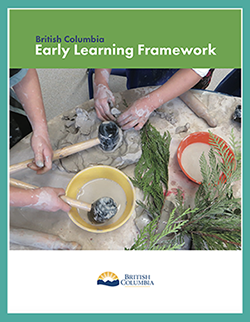Module 3: Living Inquiries – Well-Being and Belonging
Emotions, Thoughts, and Views
Children’s thoughts, emotions, and views are listened to and respected.
Critically Reflective Questions
- Spend time noticing the many ways that children express thoughts, emotions, and views (both verbal and non-verbal):
- What did I learn?
- What surprised me?
- Children sometimes express frustration, sadness, or anger. What choices do I make in these moments?
- What is my image of the child? What is my image of the educator? How do these images influence the ways that I respond to children’s frustration, sadness or anger?
- What tensions arise when children’s behaviour challenges me?
- How do I respond to the strong, exuberant emotions and excitement that children bring to their play and learning?
- What is the role of the educator in resolving conflicts between children? Is there a “right” way to do this? Think about images of children:
- Do children have opportunities to discuss major life events such as
- Birth
- Illness
- Death
- Do children have opportunities to discuss difficult life issues such as
- Violence
- Guns
- Fear
- Compassion
- Inclusion
- Power
- In what ways could I engage colleagues in discussion in these difficult areas?
Case Study: Emotions, thoughts, and views
A junior kindergarten program started using a “Zones of Regulation” program to explore emotions and self-regulation with the children. They started with basic emotions: sad, mad, happy, silly, frustrated, and discussed what colour could be associated with that emotion. For example, the colour red represented feeling mad. One of the activities the children enjoyed was the practice of making faces to show their emotion. The children made faces in front of a mirror, and then talked about what is different in each face, for each emotion.
As children began identifying and discussing their emotions at home, the educators decided to create a parent package of the “Zones of Regulation” program to encourage parents to further explore emotions with their children at home.
The educators see this learning as one of the first steps in social responsibility. It is important for children to learn about emotions and social-emotional well-being. This learning can also teach children about how to have compassion for others.
Reflective Questions
In your practice, you can spend time noticing the multiple (verbal and non-verbal) ways thoughts, emotions, and views are expressed by children. What did you learn? What surprised you?
What tensions arise when children’s behaviour, feelings, or emotions challenge you?
